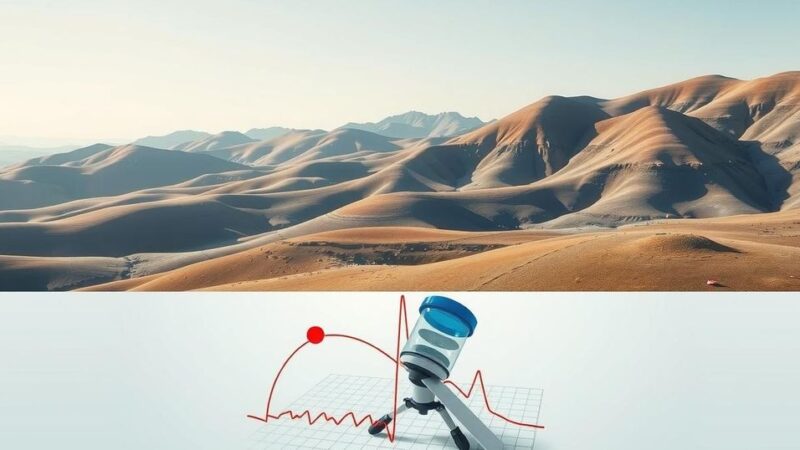The year 2025 witnessed extreme weather in the U.S., with intense winds and wildfires in California, and snowy winter storms in the eastern states. Scientists attribute these conditions, among others, to anthropogenic climate change, which has also made 2024 the hottest year on record. Advances in research are enabling scientists to connect weather events to climate change, showcasing significant impacts on weather patterns and increasing the occurrence of extreme weather.
The year 2025 commenced with a succession of extreme weather events across the United States, notably in Southern California where winds reached speeds of 100 mph, resulting in record-setting wildfires. Concurrently, harsh winter storms blanketed the Mid-Atlantic and Southern regions. These events coincided with the declaration by global meteorological scientists that 2024 had been the hottest year recorded in human history due to anthropogenic climate change.
Traditionally, climate scientists refrained from linking individual weather phenomena directly to climate change; however, advancements in research over the past decade have enabled the attribution of extreme weather events such as heat waves, hurricanes, and wildfires to climate change influences. Justin Mankin, a climate scientist at Dartmouth College, noted that human-induced climate changes are indeed reshaping weather patterns, resulting in unprecedented weather possibilities.
Understanding the distinction between climate and weather is essential; climatologists define climate as the long-term average weather conditions over approximately 30 years. Dr. Danielle Touma of the University of Texas at Austin employed an analogy, likening climate to the clothing available in one’s wardrobe, while daily weather varies, akin to the choice of attire one selects based on the immediate conditions.
Though each weather event may not be directly linked to climate change, the consistent global temperature rise, approximately 1.3 degrees Celsius since the 1800s, is gradually influencing daily weather patterns—often subtly. Deepti Singh, a climate scientist at Washington State University, stated, “Everything we’re experiencing, it is occurring in a different environment.”
A rise in temperatures has contributed to a decrease in the number of freezing days in several regions of the U.S., with states like Michigan and Ohio witnessing a reduction by over a week compared to historical averages without climate change influences. Additionally, the frequency of heat waves has surged, more than tripling since the 1960s.
The alteration of atmospheric and oceanic patterns due to climate change has led to extraordinary weather occurrences. For instance, the 2021 heat wave in the Pacific Northwest was significantly exacerbated by climate change and involved unprecedented atmospheric conditions. Alex Hall from UCLA aptly described this phenomenon by stating that “we’ve kind of put the climate on steroids.”
Recent advancements in detection and attribution techniques have empowered scientists to assess the impact of human activities on weather fluctuations. Researchers utilize climate models to simulate conditions without fossil fuel emissions, facilitating the comparison of weather event probabilities and intensities in both scenarios, thereby illuminating the clear influences of climate change.
As an example, they determined that the rainfall from Hurricane Helene was 10% more intense due to climate change and 40% more likely to occur. Mankin analogized this methodology to clinical trials, emphasizing the importance of comparing treated and control groups in determining the effect of fossil fuel consumption on weather phenomena.
The article discusses the complex interactions between climate change and weather patterns, emphasizing that while not all unusual weather events can be directly attributed to climate change, increasing global temperatures have a discernible impact on the frequency and intensity of certain extreme weather occurrences. It draws attention to significant weather events of 2025 and contextualizes them within the broader framework of human-induced climate change and advancements in scientific methodologies that have enabled researchers to make more definitive connections between climate change and weather anomalies. Furthermore, the article illustrates the vital distinction between climate, defined as long-term average weather patterns, and weather, which reflects short-term atmospheric conditions. It underscores that climatic variations indeed affect everyday weather while stressing the ongoing ability of scientists to assess the ramifications of climate change through the development of innovative attribution techniques.
In summary, while not every instance of odd weather can be traced directly to climate change, significant evidence indicates that climate change is increasingly influencing the frequency and severity of weather extremes. Advances in scientific research have enabled a clearer understanding of the linkages between anthropogenic activities and weather phenomena, allowing scientists to attribute certain events, such as the extreme rainfall from Hurricane Helene, to climate change impacts. This interplay underscores the necessity of continual observation and research to fully comprehend the ongoing alterations in our planet’s climate and weather systems.
Original Source: www.wprl.org






